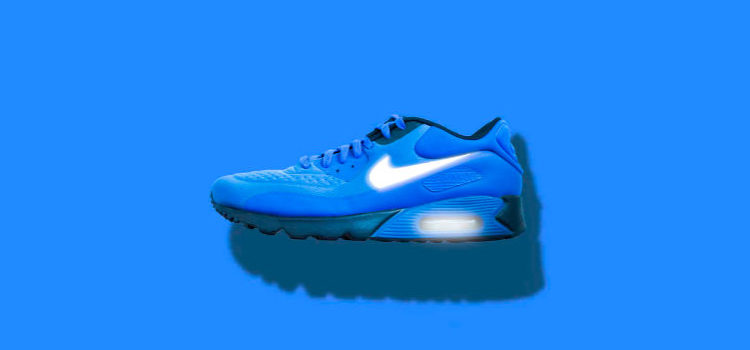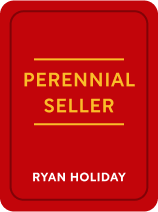

This article is an excerpt from the Shortform book guide to "Perennial Seller" by Ryan Holiday. Shortform has the world's best summaries and analyses of books you should be reading.
Like this article? Sign up for a free trial here .
Are you bringing a new product into the market? What can you do to create a buzz around your product that won’t die off the moment you stop marketing it?
Marketing isn’t the final goal of your new product. The final goal of your product is to be good enough to inspire word of mouth—without this, even with the biggest burst of marketing, your product will die. Think of all the failed products that launched to massive hype – a burst of PR/paid marketing clearly is not sufficient.
Here are some tips on how to market a new product—and get people to care about it even after the initial hype is over.
Principles of Marketing
Resist thinking “if it’s a good product, people will come” or “marketing doesn’t matter if in the long run the good product will win.” This is entitled thinking that will sink your product. Instead, working hard where others are entitled or lazy is an opportunity for you to win.
Assume this: Nobody cares about what I’ve made. They don’t know what it is. They can easily do without my work.
- Humility makes you work harder than ego.
- Even if you have a broad influence, it is better to assume that no one cares what you’re making, and work hard accordingly.
You should not outsource marketing. Be your product’s primary salesperson, even if you have salespeople working with you.
- Do not dislike marketing for its drudgery or your fear of “selling out.” If no one hears about your work, your work will not have the chance of impact.
- If you genuinely believe your work is of value, be excited about getting it out there.
Every new user has an activation barrier to trying your product. There are costs in money, time, energy, mental (understanding a new product), opportunity cost (when they try your product, they can’t try others), and possibly social cost (trying your product could risk their social standing). Even if you know it’s the best thing in the world for them, they don’t know that yet.
- Each new work competes for customers with everything that came before it and everything that will come after.
- Think of all the free concerts you’ve never been to, free samples you haven’t tried. Just because your work exists doesn’t mean people want to try it.
So the goal of marketing and positioning is to lower the barrier as much as possible to get them to see the benefits.
Whenever targeting someone, always think, “what’s in it for them?”
Tactics of Marketing
The core of marketing tactics is to find your target user. From your positioning, you should know who your target user is. Now you need to find out where they are and how to get their attention. “Find your addicts.”
This section covers a range of tactics and tips on how to market a new product—from pricing, launching, influencers, press, and paid advertising.
Pricing
Consider lowering the price of your product, or making it free. Lowering the cost barrier almost always gets more users to try, which gives the product a fighting chance at proving its value. More users also means a bigger base to grow from word of mouth, and a better chance of having a lasting impact.
Consider these pricing models:
- Freemium models give a feature-lite free product, with options to upgrade.
- Give an excerpt of your product for free (eg free book chapters).
- Free trials (eg 30-day) before the user has to pay.
- Lower the cost for a promotional period.
- Your product may be entirely free and funded through another business model
- e.g. ad-supported social apps, microtransactions for free games, expensive tickets to private events, sponsorships for videos that are free to viewers.
If all your competitors use an expensive medium, move to a cheaper medium.
- Raymond Chandler succeeded by embracing the paperback.
- (Shortform examples: Traditionally, video games cost $20-60 each. Then free games that supported microtransactions exploded past paid games in popularity.)
Consider even supporting piracy of your product, if the net benefit is positive.
- Musicians might support piracy, if their main earnings come from paid concerts.
Launching
Word of mouth responds to momentum: people share what seems to be hot. So compress your marketing into a launch period, so that you get additional benefits of what looks like momentum to users.
- Record labels hold tracks back until they get a number of stations committed to playing it. The more times you hear a song, the more likely it is to become a hit.
Take inventory of everything you have at your disposal to get your product in people’s hands.
- Consider: relationships, media contacts, research of past launches, favors you’re owed, advertising budget, resources or allies
- Write a Call to Arms to fans and friends asking for any help, ideas, connections, assets.
Be willing to hustle. Sell your product however you can, especially in the beginning.
- Bonobos founders sold pants out of duffel bags.
- Phil Knight of Nike sold shoes out of his car trunk at track meets.
Influencers
Influencers are people with their own followings who have audiences resembling your target users. Their recommendation carries a lot of weight with their audience.
The most valuable lists are the ones you can’t buy your way into (like Oprah’s favorite things).
Don’t just blindly send to influencers. Think – what’s in it for them?
The answer: influencers want to be known for having good taste and being first to recommend things of genuine value to their followers. Therefore, you have to consider your audience’s audience.
The first step to attract influencers is to make something really awesome that exceeds the expectations of busy, important people with exacting taste. They want to recommend something awesome for their audience, that will in turn feed back to them.
Tactics
- Research. Find people who have promoted similar things to your product; have reputations as tastemakers; seem to have a hunger for your product. Then reach out and improve their lives.
- Consider influencers who aren’t drowning in requests – not other authors, but army generals, academics, CEOs?
- Be liberal with giving out free things to people who can promote it to your target audience.
- Book writers can send out free books to people who would like the book and would promote it to their close circle (e.g. send a military themed book to vets).
- Don’t just ask them to promote your product. They get bombarded with these requests. Be a person. Think relationship first, transaction second. Treat them like a human, and be earnestly interested in improving their lives.
- If you see someone organically pick up your product, send them free stuff; invite them to tour your factory; send nice emails; make them custom products; make them an unofficial ambassador.
- Once you get influencers, use them as social proof to attract more influencers and users.
- Restaurants like Katz’s Deli show famous people who have eaten there. This is meant to communicate, “you’re sitting somewhere special. Special people have eaten here.”
- When accepting an award, Kentucky basketball coach John Calipari flew in dozens of his old players and had them stand on stage with him. The message: “play for me and you’ll end up like these guys.”
When you find an influencer who likes your product, hold on for dear life. Their loyalty will bring you new users many times over.
Press and PR
Generic mass-media press, even in brand names like CNN, is often overrated, if the audience is not targeted or likely to buy.
- The author argues that media outlets already have trouble getting their audience to pay for their product – why would their audience even buy yours?
- People get the causation wrong – big products get reported on because they’re good; big press doesn’t necessarily lead to success.
Don’t let your ego get you distracted. There are likely more specific tastemakers who are better worth reaching out to.
There is one benefit to press – the “featured on” logos are useful for signaling legitimacy to new potential customers.
If you do want to do press – media writers are dying for a scoop on a great story. Give them a unique story to write about. (What’s in it for them?)
- Don’t just pitch them begging for coverage, like every other marketer.
- Think about the crazy thing to which your instinctive reaction is, “there’s no possible way we can do that.” That’s probably what you should do. You don’t get coverage for what you believe, but what you do. Make some noise.
- Variant: newsjacking – when people are talking about a topic, insert yourself into the conversation by connecting what you do with the topic.
Examples
- Before Black Friday, Amazon got huge press for their drone delivery concept (which was nowhere close to production-ready).
- Google has a different doodle on most days honoring something, guaranteeing that it gets some positive press. Similarly, think about what’s being celebrated that day, week, or month.
- First [X] to use a new [Y].
- (Shortform note: This explains all the meaningless PR around vapor projects in virtual reality / augmented reality / artificial intelligence / bitcoin.)
- A minister-turned-atheist author held a church service for atheists.
- An electronic dance music group equipped fans with heart rate monitors.
- (Shortform examples: Writers went on Soylent for a month (or tried any product for its recommended duration and reported back). Elon Musk’s companies have unique stunts – releasing ‘flamethrowers,’ launching a Tesla into space.)
Start with smaller outlets to get buzz going, so that interest seems to bubble up organically. Trade up in reputation and get the big score later.
Paid Advertising
Paid advertising works better once the product is already in people’s awareness, not for launch. You can then spend a little money to push them over the edge, rather than overcome a huge hurdle to adoption.
The simple math here is to make sure (Customer acquisition cost – Lifetime value of customer) is positive. Because you won’t have data on this, strike a medium – don’t hesitate to experiment, but don’t overextend and waste money.
(Shortform note: remember that there are already big brands paying big money for optimized advertising – so the market rate for advertising will be competitive. Ideally, you have a differentiation in conversion rate or lifetime value, making advertising relatively more profitable for you. Otherwise you can burn a lot of money very quickly without the sales to show for it.)
Try to be more clever and creative with your advertising.
- Instead of buying a billboard in Times Square, buy a small billboard in your childhood town saying, “Dear Teachers of Franklin High School – Thanks for Calling Me a Failure. Look at Me Now.” Dollar for dollar, the press for the second will be far better.
- Paulo Coelho published ads with the entire text of The Alchemist: “Thanks to the millions who read this book. If you’re not one of them, read this ad.”
All in all, if you have to choose between spending on paid PR or giving away products to the right early adopters, choose the latter.
After launch, you must persist. Great work is measured over a period of years, not months. Give yourself enough runway to get airborne. Cutting the engines halfway through is going to guarantee failure.

———End of Preview———
Like what you just read? Read the rest of the world's best book summary and analysis of Ryan Holiday's "Perennial Seller" at Shortform .
Here's what you'll find in our full Perennial Seller summary :
- How to create enduring products with a loyal following
- Why word of mouth is the only marketing channel that endures time
- What to do after you've created a great work






